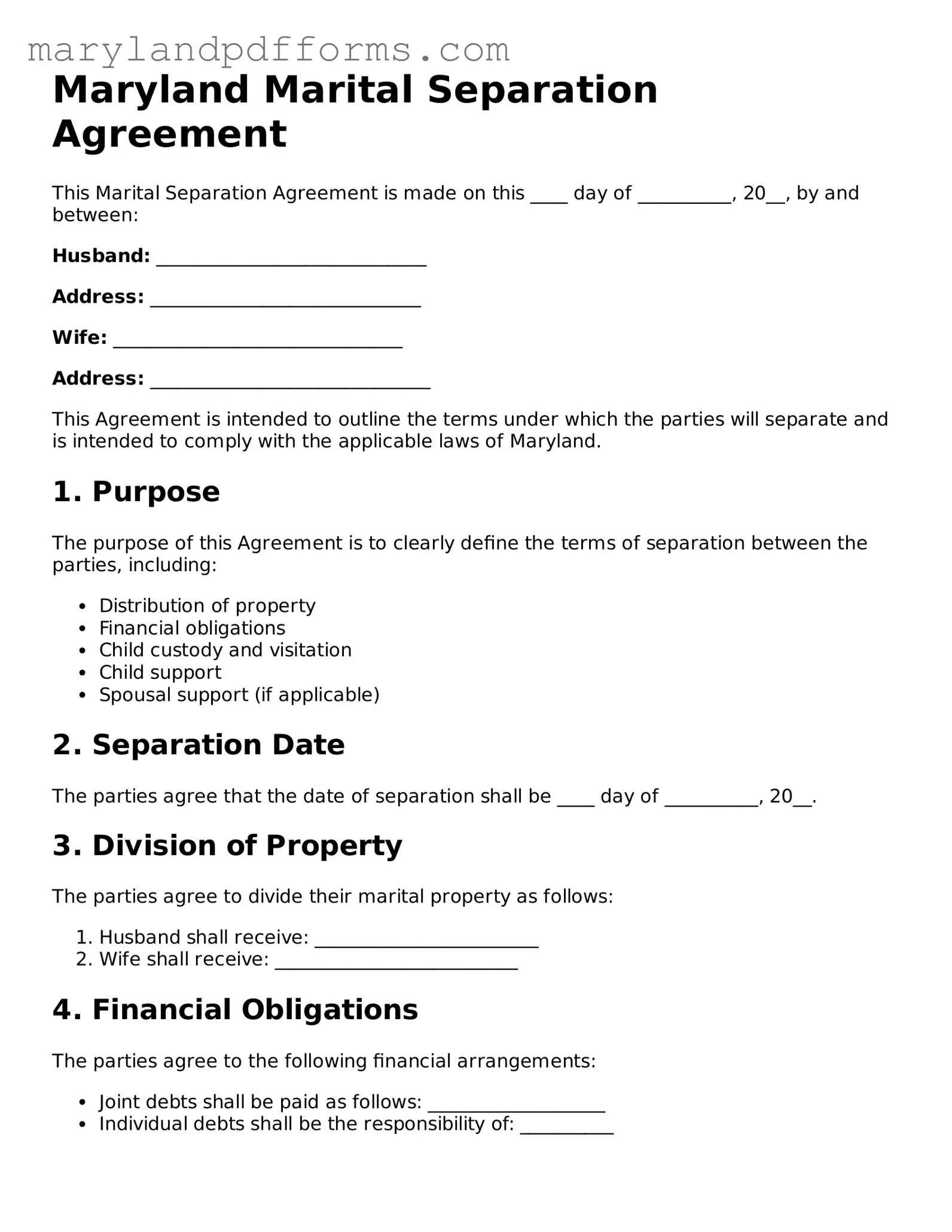What is a Maryland Marital Separation Agreement?
A Maryland Marital Separation Agreement is a legal document that outlines the terms of separation between spouses. It addresses various aspects of the couple's life, including property division, child custody, and financial responsibilities. This agreement helps both parties understand their rights and obligations during the separation period.
Why should I use a Marital Separation Agreement?
Utilizing a Marital Separation Agreement can provide clarity and structure during a challenging time. It can help prevent misunderstandings and disputes by clearly defining:
-
How assets and debts will be divided.
-
Child custody arrangements and visitation schedules.
-
Financial support obligations, such as alimony or child support.
Having a written agreement can also streamline the divorce process if you decide to proceed with one later.
How do I create a Marital Separation Agreement in Maryland?
Creating a Marital Separation Agreement involves several steps:
-
Discuss the terms with your spouse to reach a mutual understanding.
-
Draft the agreement, ensuring all important topics are covered.
-
Consider consulting a lawyer to review the document for legal compliance.
-
Both parties should sign the agreement, preferably in the presence of a notary.
Make sure to keep copies of the signed agreement for your records.
Is a Marital Separation Agreement legally binding?
Yes, once signed and notarized, a Marital Separation Agreement is generally considered legally binding in Maryland. However, it’s important to note that both parties must voluntarily agree to the terms. If either party fails to adhere to the agreement, the other party may seek legal enforcement through the courts.
Can I modify the Marital Separation Agreement later?
Yes, modifications to the Marital Separation Agreement can be made if both parties agree to the changes. It’s crucial to document any modifications in writing and have them signed and notarized to ensure they are enforceable. Always consult with a legal professional when making changes to ensure compliance with Maryland law.
What happens if we reconcile after signing the agreement?
If you and your spouse decide to reconcile after signing the Marital Separation Agreement, the agreement can become void. However, it’s advisable to formally revoke or nullify the agreement in writing to avoid any potential confusion in the future. Consulting with a lawyer can help clarify the best course of action.
